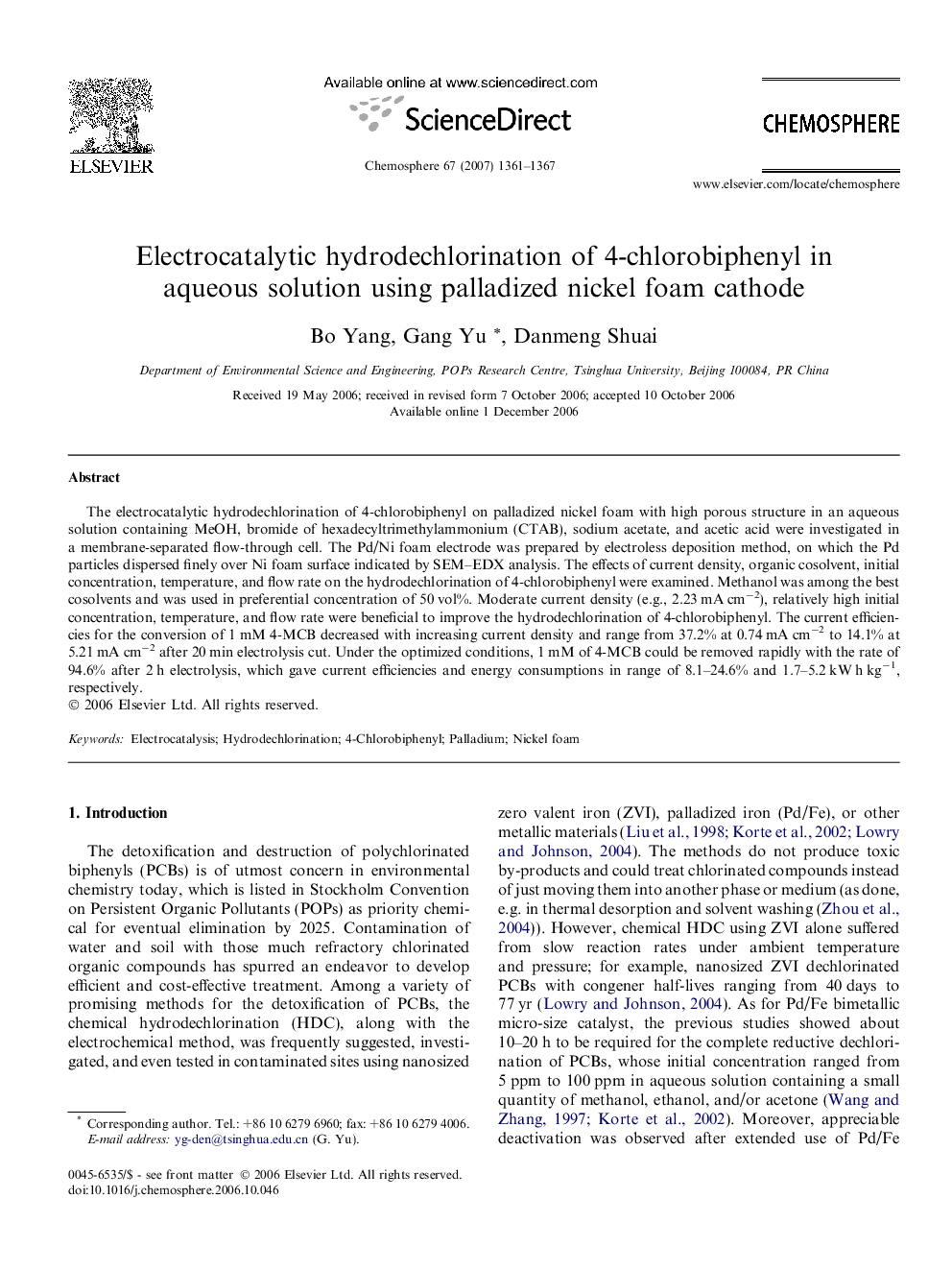| Article ID | Journal | Published Year | Pages | File Type |
|---|---|---|---|---|
| 4415957 | Chemosphere | 2007 | 7 Pages |
The electrocatalytic hydrodechlorination of 4-chlorobiphenyl on palladized nickel foam with high porous structure in an aqueous solution containing MeOH, bromide of hexadecyltrimethylammonium (CTAB), sodium acetate, and acetic acid were investigated in a membrane-separated flow-through cell. The Pd/Ni foam electrode was prepared by electroless deposition method, on which the Pd particles dispersed finely over Ni foam surface indicated by SEM–EDX analysis. The effects of current density, organic cosolvent, initial concentration, temperature, and flow rate on the hydrodechlorination of 4-chlorobiphenyl were examined. Methanol was among the best cosolvents and was used in preferential concentration of 50 vol%. Moderate current density (e.g., 2.23 mA cm−2), relatively high initial concentration, temperature, and flow rate were beneficial to improve the hydrodechlorination of 4-chlorobiphenyl. The current efficiencies for the conversion of 1 mM 4-MCB decreased with increasing current density and range from 37.2% at 0.74 mA cm−2 to 14.1% at 5.21 mA cm−2 after 20 min electrolysis cut. Under the optimized conditions, 1 mM of 4-MCB could be removed rapidly with the rate of 94.6% after 2 h electrolysis, which gave current efficiencies and energy consumptions in range of 8.1–24.6% and 1.7–5.2 kW h kg−1, respectively.
